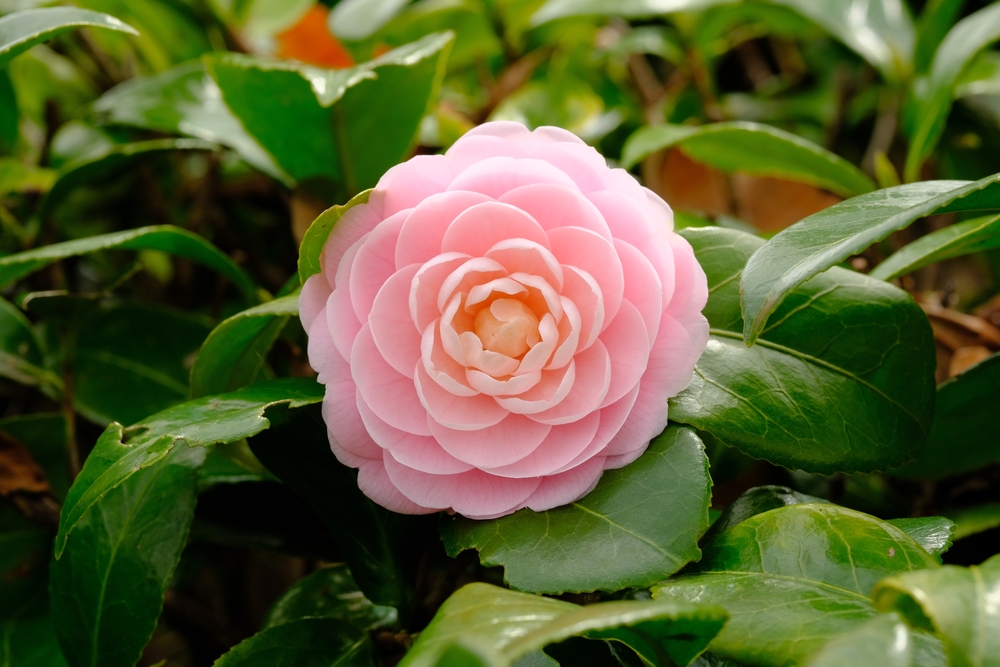With Japan’s varied regional climates there are always beautiful flowers blooming. Despite the cherry blossoms often stealing the show, other Japanese flowers are also both beautiful and steeped in history and culture.
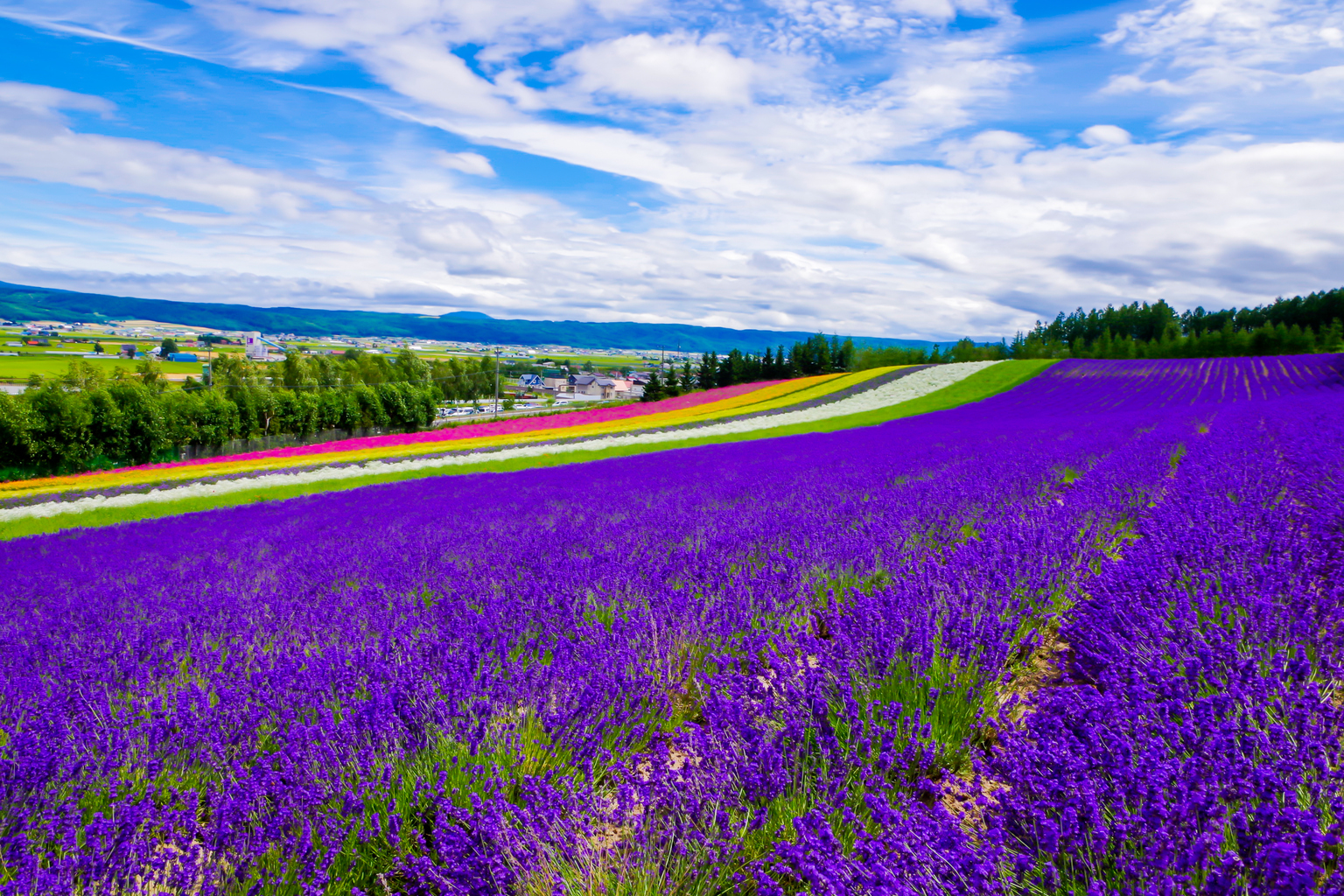
Tomita Farm
1. Lavender, Hokkaido
Tomita farm has made a name for itself for its summer carpets of purple lavender bringing in flocks of tourists to its comfortable summer climate. But that wasn’t always the case.
After World War II, many of Hokkaido’s farms and crops were devastated, leaving potato production at 30 percent and rice at a measly 20 percent compared to pre-war numbers. Some of the crops made a comeback by the 1950s, so post-war price controls were eliminated. A market crash then sent already struggling crop farmers into further distress.
But lavender provided a purple ray of hope in an otherwise dark time for these Hokkaido farmers.
Tadao Tomita, founder of Farm Tomita, brought in lavender seeds from France and began fervent domestic production of lavender oil. He also contracted others to grow lavender in the region. Though the market price was much lower than that of say, potatoes, it at least guaranteed a living wage. Now the beautiful farms that saved Tomita’s livelihood make for a beautiful spot where visitors share in that happiness.
When to see lavender: Late June – Early August
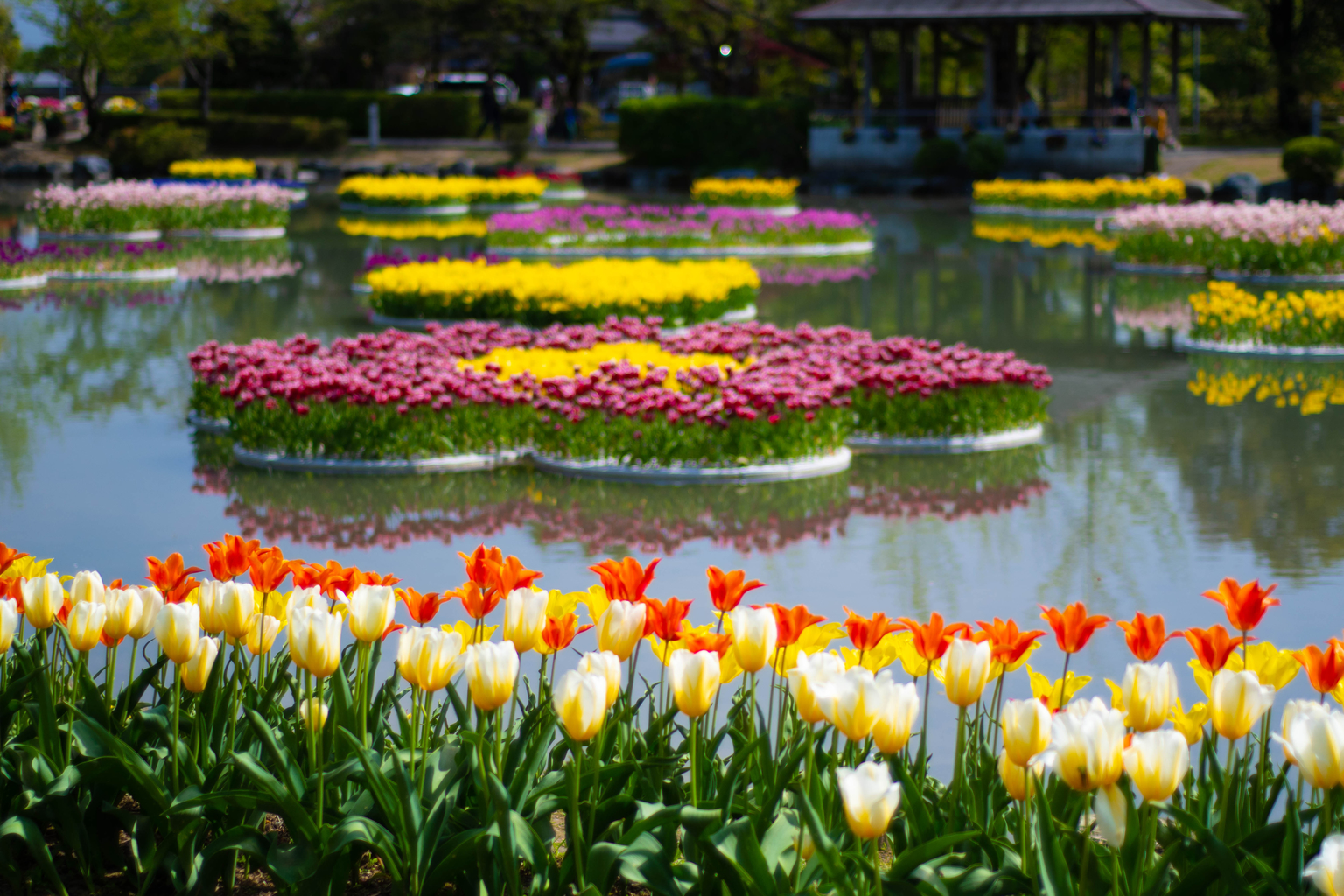
Tonami Tulip Park
2. Tulips, Toyama
Similar to the lavender of Hokkaido, the tulips of Toyama Prefecture were introduced as a means to strengthen a struggling farming economy.
Much of Toyama’s land was used for single-crop paddy fields, which posed a problem in the snowy winters of Toyama, as nothing could be grown in its stead. Farmers were frugal and made arrangements, but one Bunzo Mizuno decided that something must be done.
After ordering 10 bulbs, then selling them as cut flowers, Mizuno realized tulips could fetch a high price. But rather than keeping the tulip riches to himself, Mizuno encouraged locals in the area to grow them too.
In 1964, 19 million tulips were exported overseas and Toyama Tulips made a name for themselves. Now, Toyama Prefecture is the largest tulip producer in the whole of Japan.
Tulip fields can be found all over Toyama, but one of the best places to see them is the Tonami Tulip Fair at Tonami Tulip Park.
When to see tulips: Mid-April – Early May
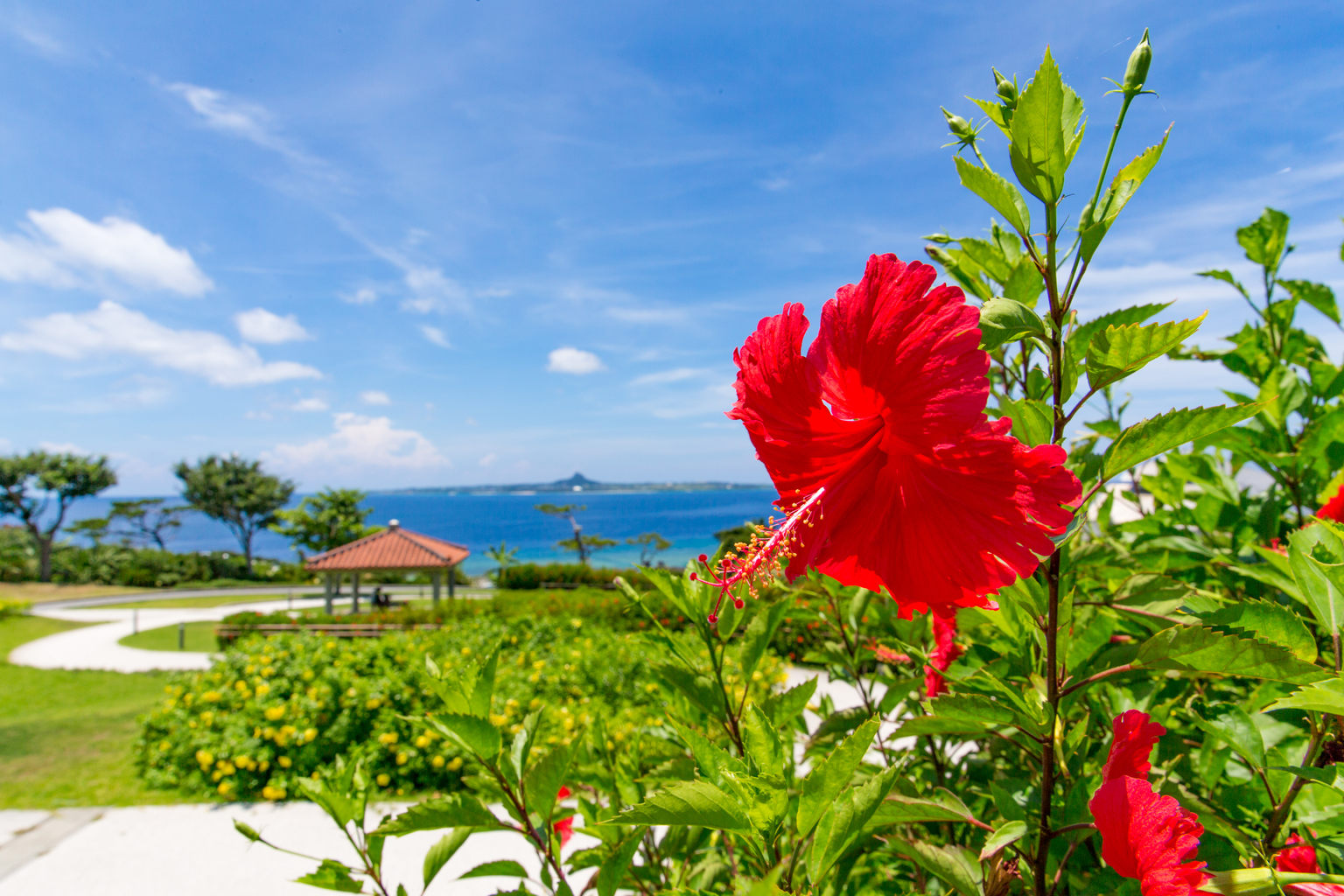
Hibiscus
3. Hibiscus, Okinawa
Whenever you see these bright blossoms, you’re instantly transported to a tropical beach. And perhaps that beach is somewhere in Okinawa, Japan’s southernmost and westernmost prefecture with a laid-back vibe reminiscent of Hawaii.
The hibiscus is a common sight in Okinawa. Locals have a fierce love of the flower, adorning it on clothes, street decorations, souvenirs and so on. In fact, the hibiscus is thought of as a flower connecting our world and the next, so they are often planted in cemeteries or laid in front of graves to invite happiness to the next life. Because of that, sometimes hibiscus is called “Gusō bana” meaning “flower of the next life.”
It’s unclear when the flower originally arrived in Japan, as it is not a native species. But there are records of it being gifted by the Satsuma Domain to Ieyasu Tokugawa in 1641, so it is speculated to have arrived around that time.
When to see them: Year-round
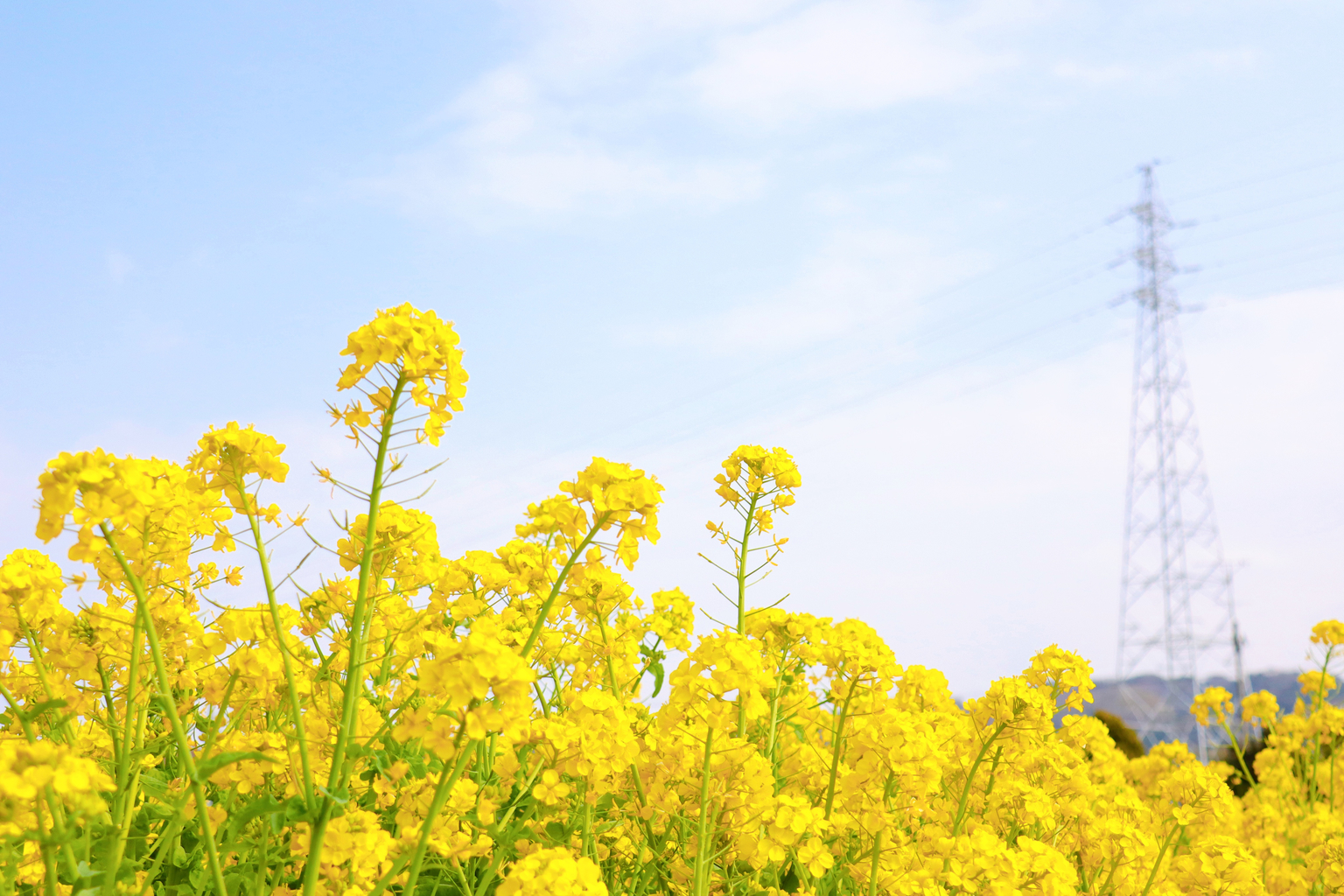
Nanohana
4. Nanohana (rape blossoms), Chiba
Though not always flying in plain sight, Japan’s prefectures each have their own flag. If you are going to Chiba Prefecture, try and spot their blue and yellow flag floating overhead. The yellow hemming represents nanohana rape blossom, the bright and cheerful flower that signifies the coming of spring. In spring, fields are blanketed in a joyful yellow as far as the eye can see. The young plants can be found in supermarkets all over Japan, offering a bitter but refreshing taste to any stir-fry. Once flowered, they are used for their oil.
Allusions to rape blossoms can be found throughout various Japanese poems and artworks. In fact, this flower has seven different meanings: love, liveliness, energy, fortune, small victories, cheerfulness and spirited competition. It’s rare for one flower to have quite so many meanings.
For a great field shot, go to the aptly named Nanabatake Road in Kamogawa. And for a famed railroad shot, photographers love this location in Isumi, Chiba.
When to see nanohana: Mid-January – Mid-March
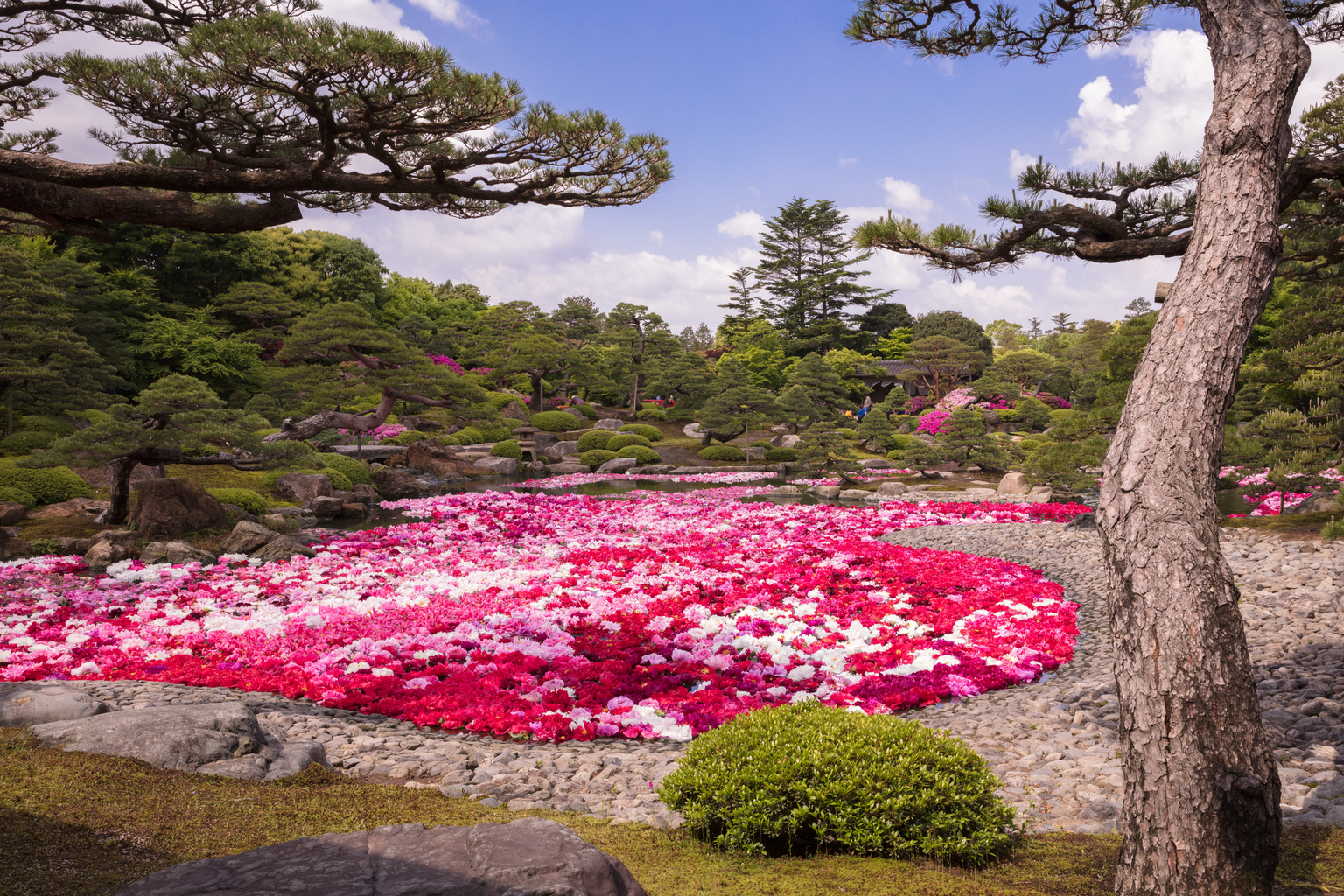
Peonies in Yushien, Shimane
5. Peonies, Shimane
Delving back into Japan’s floral history, the extravagant peonies are thought to have been brought into Japan from China in the 8th century AD. Although the peonies entered Japan through Shizuoka, they made their way down to Shimane on the back of the chief priest of Daikon Island’s Zenryuji Temple. He went for training in Shizuoka and brought the peonies back for medicinal purposes before cultivating them elsewhere on the island.
It turned out the peonies absolutely loved Shimane. The slight acidity in the soil from past volcanic activity coupled with the perfect climate allowed them to truly thrive.
But their success wasn’t only due to their optimal growing conditions. Back in the 1950s, the women of Daikon Island traveled on foot far and wide to sell peony saplings and provide for their families. This contributed greatly to the island’s peony fame, and now peony saplings are even exported abroad. In nearby Yatsuka-cho, 1.5 million peonies are produced annually. In Yatsuka-cho, go to Yuushien, one of the most gorgeous places to see peonies.
When to see peonies: April – May
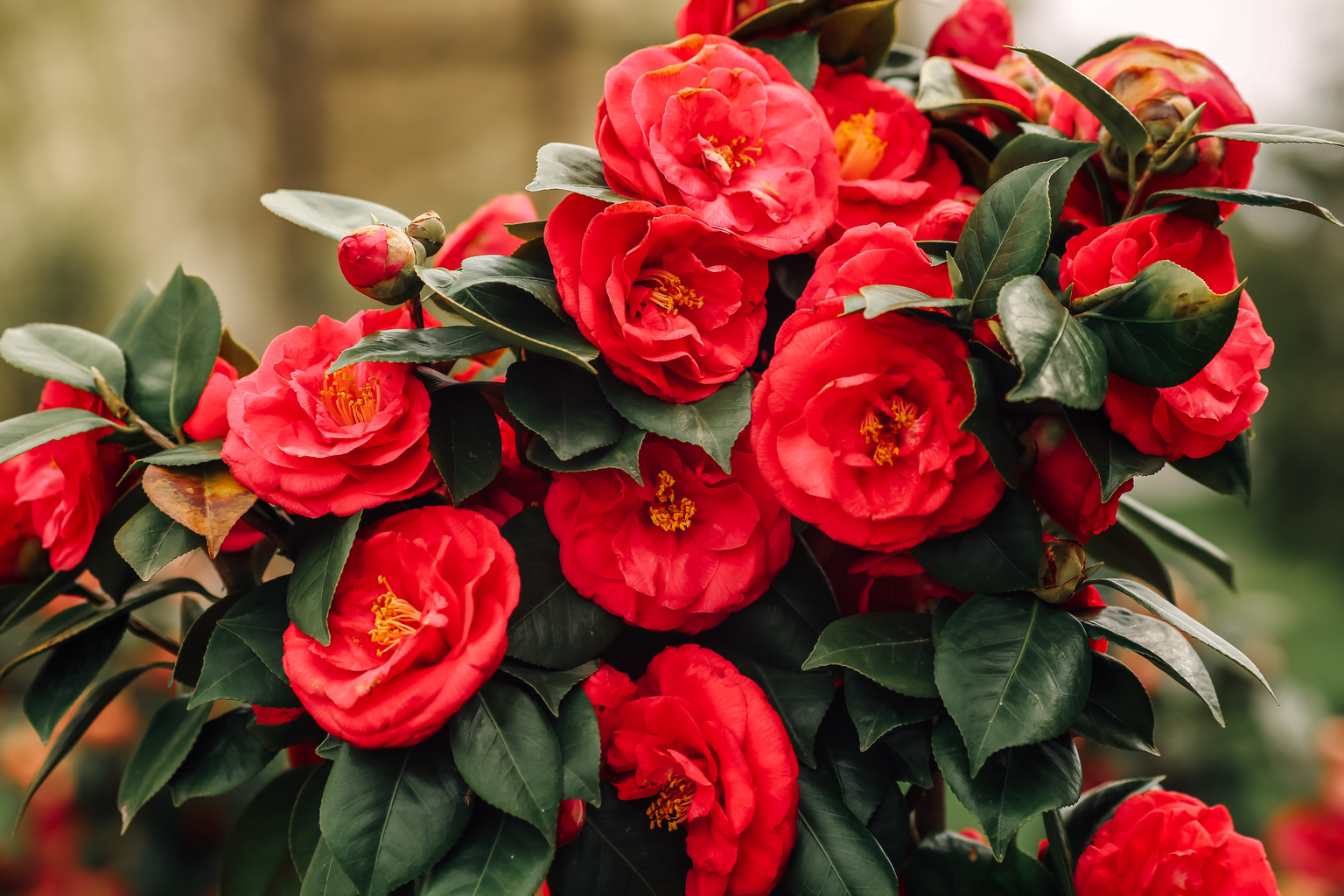
Red camelia
6. Camellia, Goto Islands
Even further down the historical flower path lies the camellia. Native to Japan, with its official name being “Camellia Japonica,” the rose-like plant can be seen all over the country. But it is the Goto Islands that claim the camellia crown.
The camellia is the symbol of the Goto Islands and they have long made a living from the flower and its oil. As rice paddies are scarce compared to other regions, there is evidence that camellia oil was used as a tax product and given to the shogunate. The camellia trade has been present for over 1,000 years and was gifted to Chinese envoys in 894. With such a long history, it’s unsurprising that the camellia can be spotted in so many aspects of the Goto Islands’ culture.
While some cultural aspects are much older, such as the tug of war with a camellia in the center that has been going on for over 400 years, there are also some more recent additions. In the 1900s, two churches were built with camellias all around the grounds and even appeared as motifs on the stained-glass windows. These days, the cute mascots of the region wear camellia crowns too.
When to see them: December – February

